Over the weekend, I was called in to deal cards at a charity tournament I was asked not to name, however I will say that it was for a good cause and they made a good deal of money.
What I can say is that I had the pleasure of dealing to Mr. Walter White himself, Bryan Cranston of “Breaking Bad” fame (now playing LBJ in the Tony nominated Broadway show “All the Way“). He was in seat 5, across the table from me, and sitting next to him in seat 4 was Laura Prepon known for the character Donna Pinciotti from “That 70’s Show” and is now playing the character Alex Vause in “Orange is the New Black“.
Outside of the fact that both of these successful actors have really lovely personalities (which isn’t always the case, unfortunately), they were very good poker players, but that wasn’t the thing that fascinated me. What really caught my attention was how other players altered their game around them. I’ll explain (no, I’m not going to tell you either of their playing techniques, partially because I don’t want to blow their cover, and partially because I would like to deal cards to them in the near future).
Moving Aside for the Big Dog
 This behavior is common when I deal to tables where there’s a WSOP bracelet winner. For some odd reason, whenever a bracelet winner would do any kind of raise, even if it was a moderate raise, or in the very beginning of the tournament, would call on a hand, most players would move out of the way and fold. I call this the big dog mentality. Even if the big dog is not the chip leader, because of the clout that big dog has, all others will move aside. This happened quite a bit when Bryan played. Even with moderate raises, all others would step aside. It wasn’t until someone challenged the big dog, on several hands, did Bryan get taken down.
This behavior is common when I deal to tables where there’s a WSOP bracelet winner. For some odd reason, whenever a bracelet winner would do any kind of raise, even if it was a moderate raise, or in the very beginning of the tournament, would call on a hand, most players would move out of the way and fold. I call this the big dog mentality. Even if the big dog is not the chip leader, because of the clout that big dog has, all others will move aside. This happened quite a bit when Bryan played. Even with moderate raises, all others would step aside. It wasn’t until someone challenged the big dog, on several hands, did Bryan get taken down.
…oddly enough, he was taken down by Drew Houston, CEO of Dropbox, who was at seat 7 on my table.
As noted before, big dogs aren’t always the chip leader. They aren’t always Mike Matusow-esque (teetering on tilt) either. As mentioned before, Bryan was very cordial and social at the table, in other words, he wasn’t Walter White, however, I am assuming because of his notoriety, most folks didn’t want to get in his way. On a couple of hands he would go unchallenged after doing a mid level raise, which was uncommon if other players had done the same. It was the behavior of the table. In other words, most of the other players had the little dog mentality, and moved aside to avoid getting run over.
Challenging the Small Dog
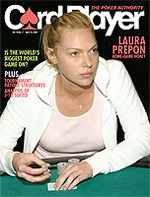 The contrary situation happened with Laura. Laura knew when to stay in hands and when to get out. She knew it was how you played the player and your hand that mattered, however, I think, because she is a female, she was challenged on several occasions. The percentage of players that would move out of the way when she would go all-in was low and because of this, she would double up her stack. In this case, she had come to my table after several players had been knocked out so we could re-balance the number of players per table. She had survived for a good hour when she was transferred to my table with a pretty aggressive blind structure in a single elimination tournament (no re-buys). In other words, she wasn’t one to be trifled with.
The contrary situation happened with Laura. Laura knew when to stay in hands and when to get out. She knew it was how you played the player and your hand that mattered, however, I think, because she is a female, she was challenged on several occasions. The percentage of players that would move out of the way when she would go all-in was low and because of this, she would double up her stack. In this case, she had come to my table after several players had been knocked out so we could re-balance the number of players per table. She had survived for a good hour when she was transferred to my table with a pretty aggressive blind structure in a single elimination tournament (no re-buys). In other words, she wasn’t one to be trifled with.
As mentioned, what interested me was the playing style of the other players. Whenever she raised hands, there were callers, and I don’t recall seeing anyone get out of the way and fold before showdown in any of her hands. They saw her as the small dog, even though she wasn’t the short stack. Like Bryan, Laura was cordial, conversational, and pleasant. There was nothing that suggested that she should be treated or seen as the small dog, however, that’s what happened.
When my grandmother was still with us, she told me that people’s personalities reflect their type.
O types shoot from the hip and tend to leap before they look. Ironic, since that’s the most common blood type in the world.
A types are direct and single minded. Because of this, they can’t see past their first impression, funny enough, this is the second most common blood type in the world.
B types are free thinkers, and tend to be more artistic and flaky, however they are creative and think outside of the box.
AB question everything, since they’re always battling between both A and B natures, they think and analyze before they make a decision, and they are also the rarest blood type.
The behaviors mentioned above by the players who played against Bryan and Laura seem to mostly reflect the A type, which is, they made their assumption, didn’t quantify either Laura or Bryan’s style of play, and allowed their gut reaction dictate their play.
Not a smart move.
I understand when most folks are under pressure, instead of thinking, they let their instincts take over. Fight or flight behavior kicks in based on what they see and not what is. Aspects in the game of poker isn’t only about what hands you get, or how to play your opponent, or even how you play the board to your advantage. It’s also about how you control yourself and your behaviors. How you control your tells. How, when you’re dealing with blinds up to the $1M/$2M mark, you stop your hands from shaking because you’ve never dealt with blinds so high, and it’s a game to learn how you by-pass the physical cues that normally inform fight or flight behavior, and actually watch the behaviors of your opponent to inform you whether you should bet, raise, or fold.
If you play poker as a “me vs. everyone else” game, you’re only partially playing it right.

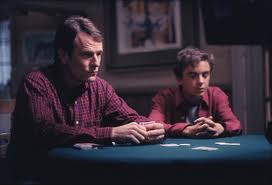
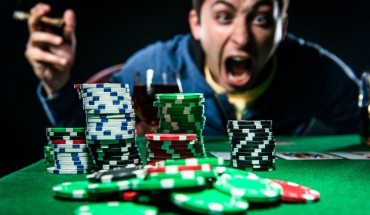
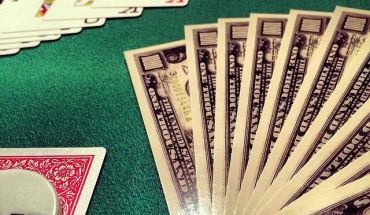
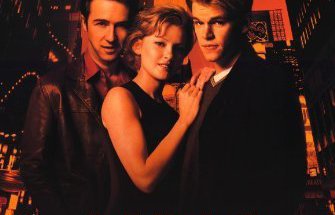
4 comments